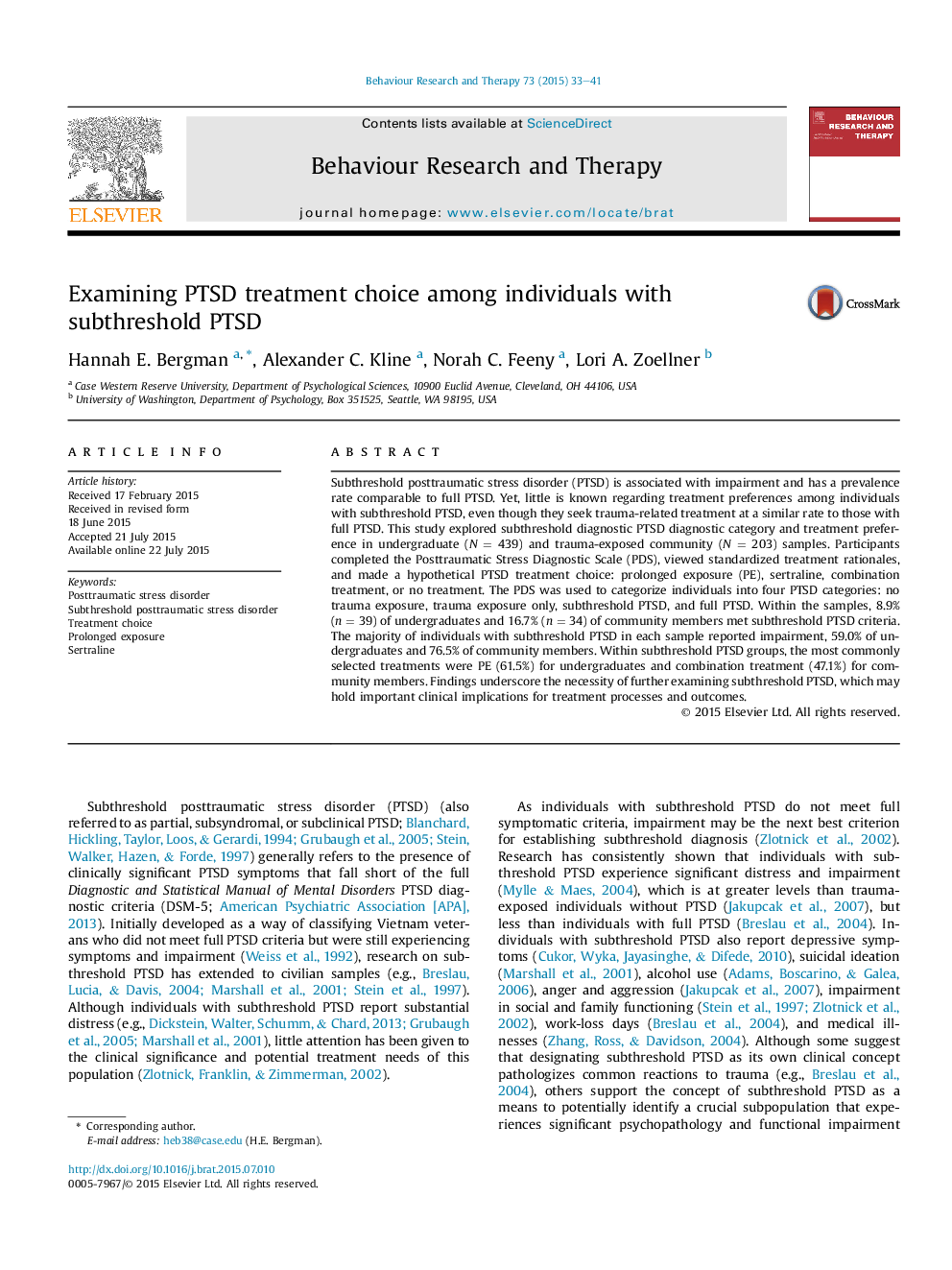| Article ID | Journal | Published Year | Pages | File Type |
|---|---|---|---|---|
| 7262236 | Behaviour Research and Therapy | 2015 | 9 Pages |
Abstract
Subthreshold posttraumatic stress disorder (PTSD) is associated with impairment and has a prevalence rate comparable to full PTSD. Yet, little is known regarding treatment preferences among individuals with subthreshold PTSD, even though they seek trauma-related treatment at a similar rate to those with full PTSD. This study explored subthreshold diagnostic PTSD diagnostic category and treatment preference in undergraduate (N = 439) and trauma-exposed community (N = 203) samples. Participants completed the Posttraumatic Stress Diagnostic Scale (PDS), viewed standardized treatment rationales, and made a hypothetical PTSD treatment choice: prolonged exposure (PE), sertraline, combination treatment, or no treatment. The PDS was used to categorize individuals into four PTSD categories: no trauma exposure, trauma exposure only, subthreshold PTSD, and full PTSD. Within the samples, 8.9% (n = 39) of undergraduates and 16.7% (n = 34) of community members met subthreshold PTSD criteria. The majority of individuals with subthreshold PTSD in each sample reported impairment, 59.0% of undergraduates and 76.5% of community members. Within subthreshold PTSD groups, the most commonly selected treatments were PE (61.5%) for undergraduates and combination treatment (47.1%) for community members. Findings underscore the necessity of further examining subthreshold PTSD, which may hold important clinical implications for treatment processes and outcomes.
Related Topics
Health Sciences
Medicine and Dentistry
Psychiatry and Mental Health
Authors
Hannah E. Bergman, Alexander C. Kline, Norah C. Feeny, Lori A. Zoellner,
